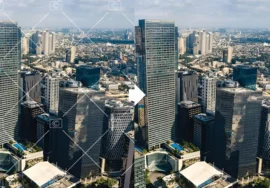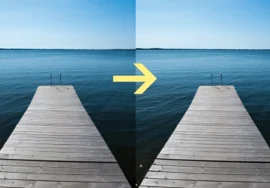
Zooming In Without Compromise: Resolution Enhancement for Wildlife and Macro Photography
Wildlife and micro photography demand exceptional image quality. Every detail and every nuance are crucial to capturing the essence of the thing. But often, photographers grapple with the limitations of their equipment for resolution. This is where the art and science of resolution enhancement come into play.
Understanding Resolution and Its Impact
Before diving into techniques, it’s essential to understand resolution and its significance in wildlife and macro photography. Resolution, measured in megapixels, determines the level of detail an image can capture. While megapixels are a factor, other elements like sensor quality, lens performance, and shooting conditions influence image sharpness.
In wildlife photography, capturing distant subjects often causes cropping and magnifying minor details. High resolution has become paramount to prevent image degradation. Macrophotography demands exceptional detail to reveal the intricate world of the miniature.
Techniques for Resolution Enhancement
1. Gear Optimization
- Lens choice: Invest in prime lenses with wide apertures for optimal light gathering and sharpness.
- Camera Body: Choose a camera with a high-resolution sensor capable of handling demanding shooting conditions.
- Tripod and Stabilizer: Decrease camera shake for sharper images, especially in low light.
2. Shooting Techniques
- Optimal Aperture: Balance depth of field with sharpness by selecting the right aperture.
- Shutter Speed: Use a fast shutter speed to freeze the action and reduce the blur.
- ISO: Control noise by using the lowest ISO possible without compromising shutter speed.
- Focus: use precise manual or auto-focus techniques to ensure critical sharpness.
- Bracketing: Capture multiple exposures to create a higher dynamic range image.
3. Post-Processing Magic
- Raw Files: Shoot in a RAW format for the greatest flexibility in post-processing.
- Noise Reduction: apply noise reduction to keep detail while controlling grain.
- Sharpening: Enhance edge definition using sharpening tools with precision.
- Lens Correction: Correct distortion and chromatic aberration for improved image quality.
- Cropping: Extract specific details while preserving image quality.
- Image Stacking: Combine multiple images for increased resolution and depth of field in macro photography.
4. Resolution Enhancement Software
- Dedicated Software: Use specialized software designed for image up-scaling.
- Artificial Intelligence: Explore AI-powered tools that can enhance resolution.
- Caution: Be mindful of potential artifacts and image degradation.
Case Studies: Real-World Examples
To illustrate the impact of resolution enhancement, let’s examine a few case studies:
- Wildlife Photographer: A photographer captures a distant eagle in flight. By combining a high-resolution camera, sharp lens, and image stacking, they achieve a stunning image with exceptional detail.
- Macro Photographer: A photographer captures a minuscule insect. Combining a specialized macro lens, careful focus, and image stacking, they reveal intricate details that would otherwise be lost.
Prizing Proper Calibration
Before delving deeper into specific examples, it’s crucial to emphasize signifying proper camera and lens calibration. Inaccurate calibration can lead to color shifts, distortion, and softness, undermining the effectiveness of any resolution enhancement technique. Regular calibration ensures that your equipment is producing the most correct data possible.
Case Study: Wildlife Photography
Let’s explore a concrete example of wildlife photography. Imagine capturing a distant snow leopard against a stark, mountainous backdrop. To preserve detail in both the subject and the environment, a high-resolution camera and a telephoto lens with image stabilization are essential.
- Pre-capture: Use a tripod to minimize camera shake, especially in low-light conditions. Shoot in RAW format to retain maximum image information.
- Capture: Employ focus bracketing to ensure critical sharpness of the subject.
- Post-processing: Utilize noise reduction carefully to preserve detail in the snow leopard’s fur. Employ sharpening techniques judiciously to enhance edge definition without introducing artifacts. Consider using image stacking software to combine multiple exposures for improved detail and dynamic range.
Case Study: Macro Photography
For macro photography, the challenge lies in capturing extreme detail at a microscopic level.
- Pre-capture: Use a dedicated macro lens or extension tubes. Employ a tripod or stable platform to avoid camera shaking.
- Capture: Utilize manual focus for precise control. Experiment with different apertures to balance depth of field and sharpness.
- Post-processing: Employ focus stacking to combine multiple images, creating an image with exceptional depth of field. Use sharpening carefully to enhance fine details without introducing halos.
Additional Tips
- Experimentation: Don’t be afraid to experiment with different techniques and software to find what works best for your specific style and subject.
- Learn from Others: Study the work of other photographers to gain inspiration and learn new approaches.
- Practice Regularly: Consistent practice is key to mastering resolution enhancement techniques.
By combining the right equipment, shooting techniques, and post-processing skills, photographers can elevate their wildlife and macro images to new heights. Remember, the goal is to enhance resolution without compromising image quality or introducing unwanted artifacts.





